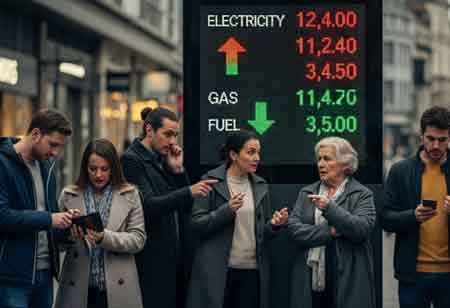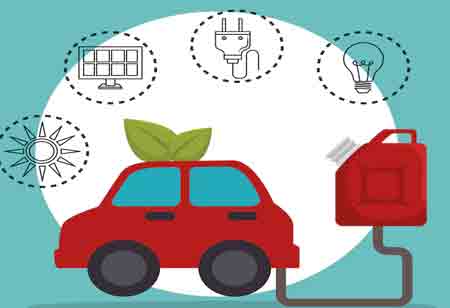Thank you for Subscribing to Energy Business Review Weekly Brief
Energy Pricing Volatility and Its Impact on Consumers
Energy price volatility impacts consumers and economies, resulting in higher bills and financial uncertainty. Mitigating strategies include fixed-rate contracts and improved efficiency, while renewables offer long-term stability.

By
Energy Business Review | Wednesday, September 03, 2025
Stay ahead of the industry with exclusive feature stories on the top companies, expert insights and the latest news delivered straight to your inbox. Subscribe today.
Fremont, CA: Within the complex sphere of global commerce and daily existence, few elements are as foundational yet as unpredictable as energy. The prices of electricity and natural gas are subject to continuous fluctuations, a phenomenon known as energy pricing volatility. This instability represents a significant concern not only for traders and corporations but also constitutes a direct and often arduous reality for consumers, businesses, and national economies.
Consumer Impact
The cascading effects of energy price volatility are most visible at the consumer level, where they manifest in multiple ways. The most immediate impact is higher monthly bills, particularly for households on variable-rate plans, which reflect price spikes in real time and place additional strain on personal budgets. Even those on fixed-rate contracts are not fully shielded, as suppliers often adjust future rates upward to hedge against market uncertainty. Beyond direct costs, volatility undermines financial planning for both households and businesses, creating budgetary uncertainty that can lead to stress for families and hinder long-term investment or growth—especially in energy-intensive sectors. Because energy is a fundamental input across various industries, including manufacturing, agriculture, transportation, and retail, rising costs often ripple through the economy, driving inflation as businesses pass expenses on to consumers. The burden is especially severe for vulnerable populations, including low-income households and individuals on fixed incomes, who already allocate a significant portion of their earnings to essential utilities. For them, sudden cost increases can impose harsh trade-offs between maintaining basic energy needs and other critical expenditures.
Mitigating the Risk
Energy price volatility is an inevitable characteristic of the market, but several strategies can help mitigate its impact on consumers. Fixed-rate contracts, for instance, allow households to lock in a specific price for a set period, providing budget stability and protection against sudden price spikes. However, this may mean forgoing potential savings if prices fall. Improving energy efficiency through measures such as upgrading appliances, enhancing home insulation, and using smart thermostats can also reduce overall consumption and ease financial pressure during periods of high costs. In the long term, transitioning to a more diversified and resilient energy mix that incorporates a greater share of renewable sources is essential for reducing dependence on volatile fossil fuel markets and stabilizing costs, despite the challenges that renewables themselves may present. Additionally, government and utility programs—ranging from targeted support for low-income households to broader initiatives such as energy efficiency incentives, price caps, and regulatory protections—play a vital role in shielding consumers from extreme market fluctuations while fostering more sustainable energy use.
The erratic nature of energy pricing is a multifaceted issue influenced by the confluence of natural occurrences and market forces. Given the escalating intensity of climate change and the continued vulnerability of global supply chains to geopolitical developments, these challenges are expected to persist. Through a comprehensive understanding of the underlying implementation of proactive measures, consumers and policymakers can work together to navigate this tumultuous environment and foster a more robust and equitable energy future.






